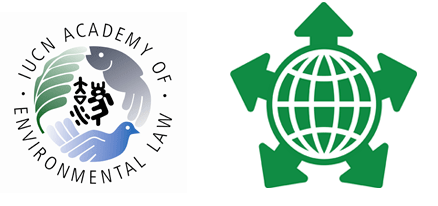Event Title
Protected Areas in Amazon Region: Transfrontier Parks, the Challenges of Environmental, Social, and Cultural Diversity Protection
Location
Room 205
Start Date
2-7-2012 3:00 PM
End Date
2-7-2012 4:40 PM
Description
Nature is not stuck in political boundaries. Protected areas can exist on international boundaries, considering the existence of transfrontier ecosystems, the need to protect biodiversity, water and forest. In fact, IUCN World Commission on Protected Areas (WCPA) has proposed the following terminology to protected areas sharing “common international boundaries”: Transboundary Protected Areas (TBPAs); Parks for Peace; Transboundary Conservation and Development Areas and Transboundary Migratory Corridors. In addition, other names have been used to describe these areas as transfrontiers natural reserves, border parks or parks on international borders. Some of these terms indicate a level of transboundary cooperation which may or may not exist. Thus, sometimes, the establishment of protected areas at the border can engender conflicts between conservation strategies, people that live in these areas or security issues.
The aim of this article is to study two protected areas that share international boundaries (transfrontier parcs) in Amazon Region, considering their characteristics and the degree of transboundary cooperation. At first we will define parks to Brazilian, French and Peruvian legislation, identifying the differences and similarities of their domestic laws of protected areas (parks). In a second step we will describe two parks and their process of establishment: 1) Montanhas do Tumucumaque Park (Amapá – Brazil) and Parc Amazonien of Guiana (French Guiana); 2) Chandless State Park (Brazil) and Alto Purus National Park (Peru). We will try to examine the civil society participation on the process of establishment and management of these parks. Completing this study we will focus on the mechanisms of cooperation that have been established and we will discuss the need or not of domestic law harmonization. We will highlight that a complementary approach of nature conservation and local development goals is necessary to ensure social cultural diversity protection and biodiversity conservation in Amazon Region.
Protected Areas in Amazon Region: Transfrontier Parks, the Challenges of Environmental, Social, and Cultural Diversity Protection
Room 205
Nature is not stuck in political boundaries. Protected areas can exist on international boundaries, considering the existence of transfrontier ecosystems, the need to protect biodiversity, water and forest. In fact, IUCN World Commission on Protected Areas (WCPA) has proposed the following terminology to protected areas sharing “common international boundaries”: Transboundary Protected Areas (TBPAs); Parks for Peace; Transboundary Conservation and Development Areas and Transboundary Migratory Corridors. In addition, other names have been used to describe these areas as transfrontiers natural reserves, border parks or parks on international borders. Some of these terms indicate a level of transboundary cooperation which may or may not exist. Thus, sometimes, the establishment of protected areas at the border can engender conflicts between conservation strategies, people that live in these areas or security issues.
The aim of this article is to study two protected areas that share international boundaries (transfrontier parcs) in Amazon Region, considering their characteristics and the degree of transboundary cooperation. At first we will define parks to Brazilian, French and Peruvian legislation, identifying the differences and similarities of their domestic laws of protected areas (parks). In a second step we will describe two parks and their process of establishment: 1) Montanhas do Tumucumaque Park (Amapá – Brazil) and Parc Amazonien of Guiana (French Guiana); 2) Chandless State Park (Brazil) and Alto Purus National Park (Peru). We will try to examine the civil society participation on the process of establishment and management of these parks. Completing this study we will focus on the mechanisms of cooperation that have been established and we will discuss the need or not of domestic law harmonization. We will highlight that a complementary approach of nature conservation and local development goals is necessary to ensure social cultural diversity protection and biodiversity conservation in Amazon Region.

